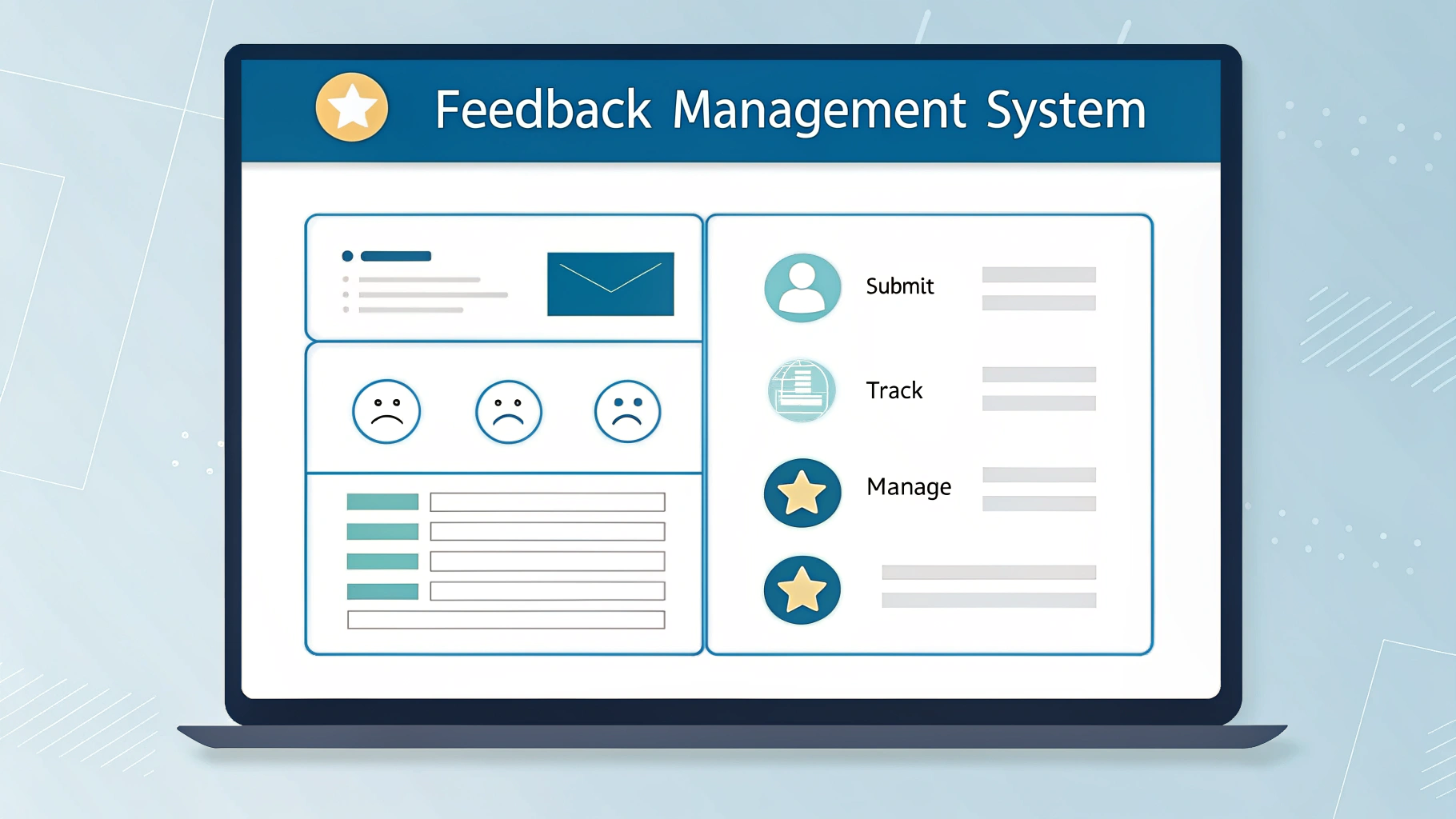Feedback control plays a vital role in various systems, from industrial processes to organizational management. This comprehensive guide explores how feedback control mechanisms work, their importance, and their practical applications across different fields.
What is Feedback Control?
Feedback control is a fundamental concept that involves monitoring and adjusting a system’s output to maintain desired performance levels. The process includes measuring actual results, comparing them with expected outcomes, and making necessary adjustments to achieve optimal results. In modern systems, a feedback management system automates much of this process, ensuring efficient and accurate control.
Key Components of Feedback Control
1. Input Variables
Input variables represent the desired state or target that the system aims to achieve. These could be:
- Temperature settings in a thermostat
- Speed settings in cruise control
- Production quality standards in manufacturing
- Customer satisfaction targets in service industries
2. Sensors and Measurement Devices
These components continuously monitor the system’s actual performance and collect real-time data. Modern feedback management system employ sophisticated sensors that provide accurate measurements across multiple parameters.
3. Controller
The controller compares the measured output with the desired input and calculates the necessary adjustments. It uses complex algorithms to determine the appropriate response to any deviations.
4. Output Adjustment Mechanism
This component implements the controller’s decisions by making physical or operational changes to bring the system back to its desired state.
Types of Feedback Control Systems
Negative Feedback Systems
These systems work to reduce deviations from the desired state. When the output increases above the target, the system decreases it, and vice versa. Examples include:
- Home heating systems
- Blood pressure regulation in the body
- Voltage regulators in electronic devices
Positive Feedback Systems
These systems amplify changes and are less common in control applications. They’re typically found in:
- Chemical reactions
- Population growth models
- Financial market trends
Applications Across Industries
Manufacturing and Production
In manufacturing, feedback control ensures:
- Consistent product quality
- Optimal resource utilization
- Reduced waste and errors
- Improved productivity
Business Management
Organizations use feedback management system to:
- Monitor employee performance
- Track customer satisfaction
- Optimize business processes
- Manage project timelines
Environmental Control
Environmental applications include:
- Climate control in buildings
- Greenhouse gas monitoring
- Water treatment systems
- Renewable energy management
Benefits of Implementing Feedback Control
1. Enhanced Efficiency
- Automatic adjustment of processes
- Reduced human intervention
- Faster response to deviations
- Optimal resource utilization
2. Improved Quality
- Consistent output
- Reduced errors
- Better compliance with standards
- Enhanced product reliability
3. Cost Reduction
- Lower operational costs
- Decreased waste
- Reduced maintenance needs
- Better resource allocation
4. Better Decision Making
- Data-driven insights
- Real-time monitoring
- Predictive capabilities
- Improved problem identification
Challenges and Considerations
Technical Challenges
- Sensor accuracy and reliability
- System response time
- Integration with existing systems
- Maintenance requirements
Implementation Challenges
- Initial setup costs
- Training requirements
- Resistance to change
- System complexity
Best Practices for Feedback Control Implementation
1. Planning and Design
- Define clear objectives
- Choose appropriate control mechanisms
- Consider system scalability
- Plan for maintenance and updates
2. Implementation Strategy
- Phase-wise implementation
- Proper training programs
- Regular testing and validation
- Continuous monitoring
3. Maintenance and Optimization
- Regular system checks
- Performance optimization
- Updates and upgrades
- Documentation management
Q1: What makes a feedback control system effective?
An effective feedback control system should be responsive, accurate, and stable. It should quickly detect deviations, make appropriate adjustments, and maintain system stability without overcorrection.
Q2: How does a feedback management system differ from manual control?
A feedback management system automates the control process, providing faster response times, consistent monitoring, and more accurate adjustments compared to manual control methods.
Q3: What industries benefit most from feedback control?
While feedback control is valuable across industries, manufacturing, process industries, automotive, aerospace, and environmental control systems benefit significantly from these systems.
Q4: How often should feedback control systems be maintained?
Regular maintenance schedules depend on the system’s complexity and criticality. Generally, periodic checks should be performed monthly, with comprehensive reviews quarterly or annually.
Q5: Can feedback control systems be customized?
Yes, feedback control systems can be customized to meet specific requirements, incorporating different sensors, control algorithms, and output mechanisms based on the application.
Future Trends in Feedback Control
Artificial Intelligence Integration
- Machine learning algorithms
- Predictive maintenance
- Adaptive control systems
- Smart optimization
IoT and Connectivity
- Remote monitoring capabilities
- Cloud-based control systems
- Real-time data analysis
- Enhanced communication
Sustainability Focus
- Energy efficiency optimization
- Environmental impact reduction
- Resource conservation
- Green technology integration
Conclusion
Feedback control remains a crucial element in modern systems across various industries. The implementation of sophisticated feedback management system has revolutionized how organizations monitor, control, and optimize their processes. As technology continues to evolve, these systems will become more intelligent, efficient, and integral to operational success.
The future of feedback control lies in the integration of advanced technologies like AI and IoT, making systems more adaptive and responsive to changing conditions. Organizations that effectively implement and maintain feedback control systems will be better positioned to achieve their operational goals, maintain quality standards, and stay competitive in their respective markets.
Understanding and properly implementing feedback control mechanisms is essential for any organization looking to optimize its processes and achieve consistent, high-quality results. With continued advancements in technology and growing emphasis on efficiency and sustainability, the role of feedback control will only become more significant in the years to come.
